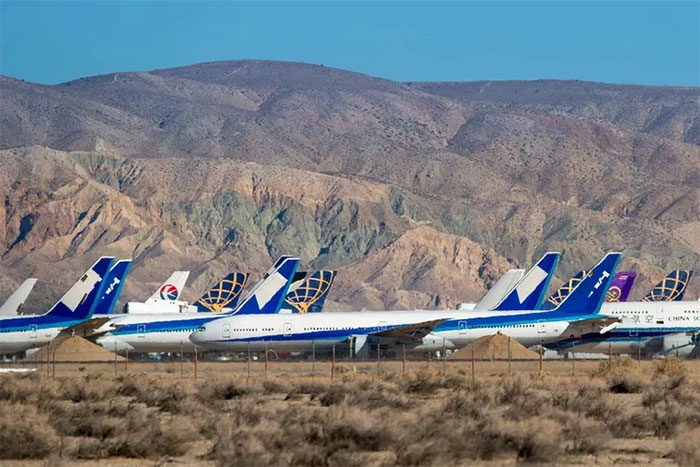Process for handling expired aircraft in the aviation industry
Below is the procedure for handling old and expired aircraft of airlines .

Expired aircraft will be sent to aircraft storage yards. (Photo: Getty Images).
Most modern aircraft have a lifespan of at least 30 years , so how are they treated after that? Expired aircraft will be sent to aircraft storage yards, also known as aircraft graveyards. Former pilot Daniel Bubb, a professor at the University of Nevada, Las Vegas, said: 'Once a plane reaches the graveyard, it will be fully stored and serviced, or it will be scrapped for spare parts. . As the aviation industry grows, airlines will decommission some old aircraft and move them to storage areas. Other airlines can buy back these old planes because they are cheap '.
If the aircraft is too old, they are often scrapped for usable parts. 'After a decommissioned aircraft is brought to the aircraft factory for dismantling, they will be drained of all remaining liquid in parts such as fuel and lubricants. After that, all remaining useful parts, from engines to components, will be removed for resale. Metal and plastic left over from aircraft dismantling are recycled in a variety of ways. At the end of the process, there was almost nothing left of the plane,' said aviation historian Shea Oakley.
Aircraft storage areas can be found all over the world – in arid places like deserts. 'If the dismantling process is delayed or the aircraft needs to be stored for an extended period of time, the dry desert air will act as a natural preservative agent, especially for metals. Aircraft stored in the desert do not require regular maintenance to return to service , according to Oakley.
Daniel Bubb also further explained why aircraft storage yards are located in deserts : 'In the desert there is less rain, snow and other harsh weather conditions, factors that can cause aircraft to the plane is rusted'. For example, the 309th Aerospace Maintenance and Regeneration Group (309 AMARG), which operates the world's largest aircraft factory located at Davis-Monthan Air Force Base in Tucson, Arizona – with its prime terrain weak is the desert. This place can accommodate more than 4,000 aircraft of various types on 43 square kilometers of land. Although this plane cemetery is closed to visitors, people can still see many plane wrecks in the area from outside the fence.
The world's second and third largest aircraft graveyards are located at the Mojave Air and Space Port (MHV) , Southern California Logistics Airport (SCLA) in California.
- 'Revolution' aviation: egg-shaped aircraft engine
- 'Secrets' have never been revealed about aviation
- These ideas may create a real revolution in the aviation industry
- Unmanned aircraft threaten civil aviation
- The search MH370 ended after 4 years - intact mysteries
- How does volcanic dust threaten aircraft?
- 25 secret aviation has never been revealed
- Miraculous escape phases of talented Russian pilots
- QZ8501 may be typical of a new type of risk with aviation
- Russia built super aircraft
- What happens when flying on an Airbus A380 in 2050?
- The strange future of aviation
 'Fine laughs' - Scary and painful torture in ancient times
'Fine laughs' - Scary and painful torture in ancient times The sequence of numbers 142857 of the Egyptian pyramids is known as the strangest number in the world - Why?
The sequence of numbers 142857 of the Egyptian pyramids is known as the strangest number in the world - Why? History of the iron
History of the iron What is alum?
What is alum?